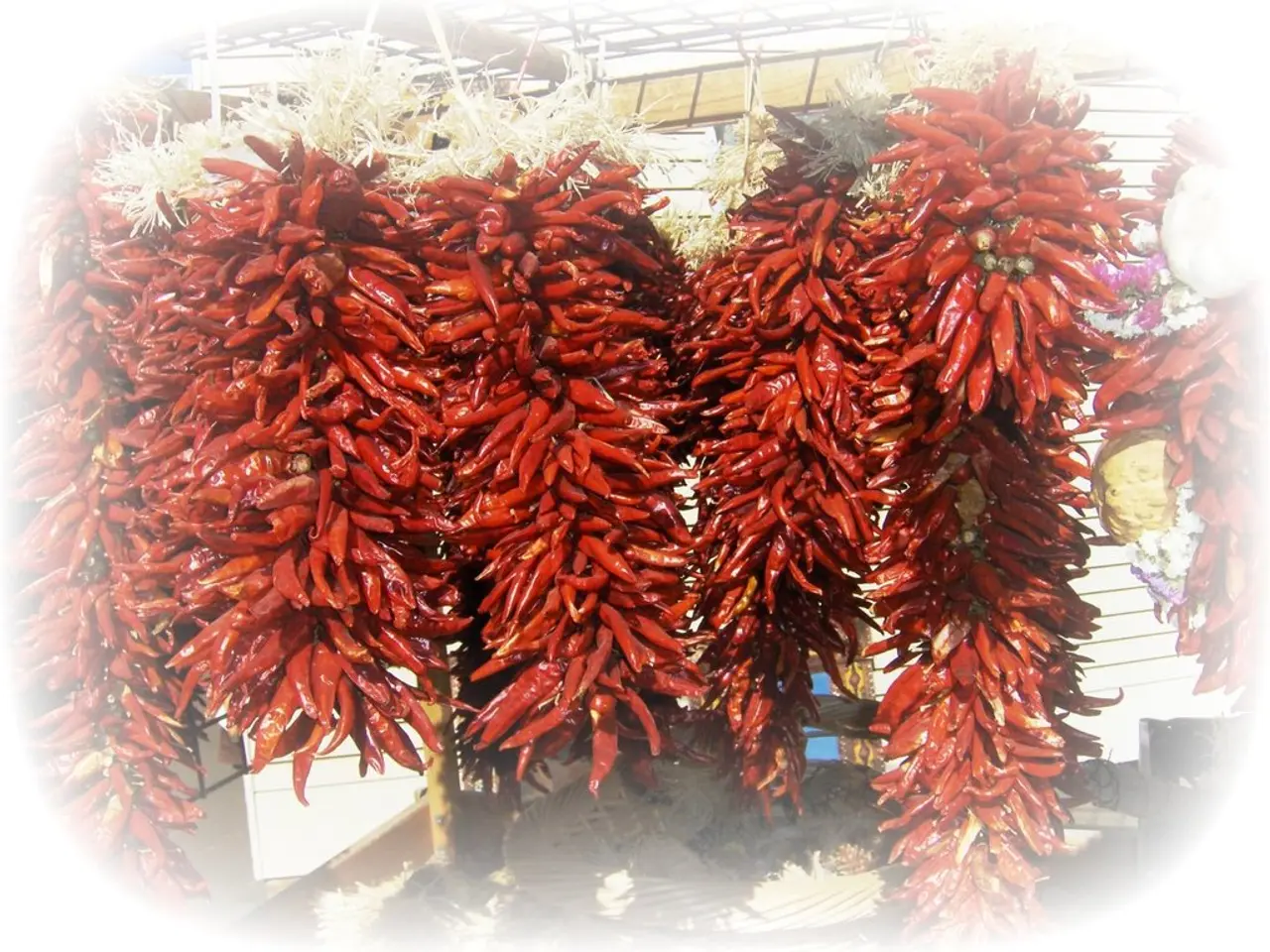Techniques for Cultivating Chillies in Domestic Pots
In the heart of your home, you can cultivate a spicy harvest year-round with the help of this comprehensive guide on growing chilies in containers.
1. Choosing Seeds
Select chili pepper seeds that suit your climate and taste preference. For healthier seedlings, plant them about a quarter inch deep in an inert growing medium such as sand, pumice, or vermiculite. Chili seeds germinate best at soil temperatures between 80°F and 95°F (27°C to 35°C), and won’t germinate well below 55°F (13°C).
2. Soil Preparation
Use a well-draining soil mix in your containers. A balanced mix that retains moisture without becoming soggy works well. You can use potting soil mixed with perlite or vermiculite to improve drainage. Fill containers (at least 5 gallons, ideally 10 gallons or bigger for larger plants) with this soil to allow proper root growth.
3. Container and Drainage
Use containers with good drainage holes to avoid waterlogging. Containers can be traditional pots or even recycled bottles modified with drainage, as long as they provide enough space and aeration for roots.
4. Lighting Requirements
Chili plants require 6–8 hours of direct sunlight daily; full sun is best for strong growth and fruit production. For seedlings indoors, provide about 16 hours of artificial light to avoid leggy growth and to boost photosynthesis. Gradually expose young plants to more sunlight to harden them off before transplanting outdoors or into final containers.
5. Planting and Transplanting
Start seeds indoors, then water seedlings thoroughly before transplanting to reduce shock. Transplant carefully to avoid root and leaf damage. Support plants as they grow using bamboo sticks or similar supports, tying stems gently to keep them upright.
6. Watering and Care
Keep soil consistently moist but not soggy. Water thoroughly but allow the top layer of soil to dry out slightly between watering. Overwatering can cause root rot. Protect plants from extreme heat as this can cause flower drop; moving containers to partial shade during very hot periods can help.
7. Additional Tips
- Fertilize with a balanced fertilizer high in potassium once plants start flowering to encourage fruiting.
- Harvest chilies frequently to encourage more fruit production.
- If growing over multiple seasons, container-grown plants can be brought indoors during winter to overwinter and produce again next season.
Chilies need pollination to produce fruits, which can be done naturally by bees or manually with a small paintbrush. Popular Indian varieties include Bhut Jolokia, Jwala Chili, Guntur Chili, Byadagi, and Naga Viper. Some chilies come in striking colors such as red, yellow, purple, and black.
Growing chilies at home requires a sunny spot, the right soil, and basic gardening knowledge. If natural light is limited, consider using grow lights for healthy chili growth. Growing your own chilies allows experimentation with different types of chili peppers, such as the hottest chili in the world, Carolina Reaper.
Chilies have health benefits, including high vitamin C content and natural antioxidants. Soaking seeds in water before planting can increase germination chances for hot varieties like Ghost Pepper or Naga Viper. Before planting, you need to purchase chili seeds from a trusted source, either from a local nursery or online seed supplier. Chilies are among the easiest crops to grow in containers.
8. Lifestyle and Home-and-Garden Improvement
Cultivating chilies at home can offer a unique addition to your indoor garden or urban homestead. The process not only provides self-sustained vegetable and fruit sources, but also contributes to a sustainable and eco-friendly lifestyle. Engaging in gardening activities also promotes stress relief and mental well-being.
9. Fruit Selection and Recipes
Experiment with different chili varieties to discover the flavors best suited for your taste, and explore new recipe possibilities in your home-cooked meals. From hot and tangy salsas to fragrant Indian dishes, the versatility of chili peppers can liven up any meal.
10. Gardening Resources
For further information on other fruits and vegetables that can be grown indoors, consider visiting home-and-garden websites and forums, attending workshops, or joining a local gardening club to learn more about the art of container gardening and grow your own fruits and vegetables year-round.




